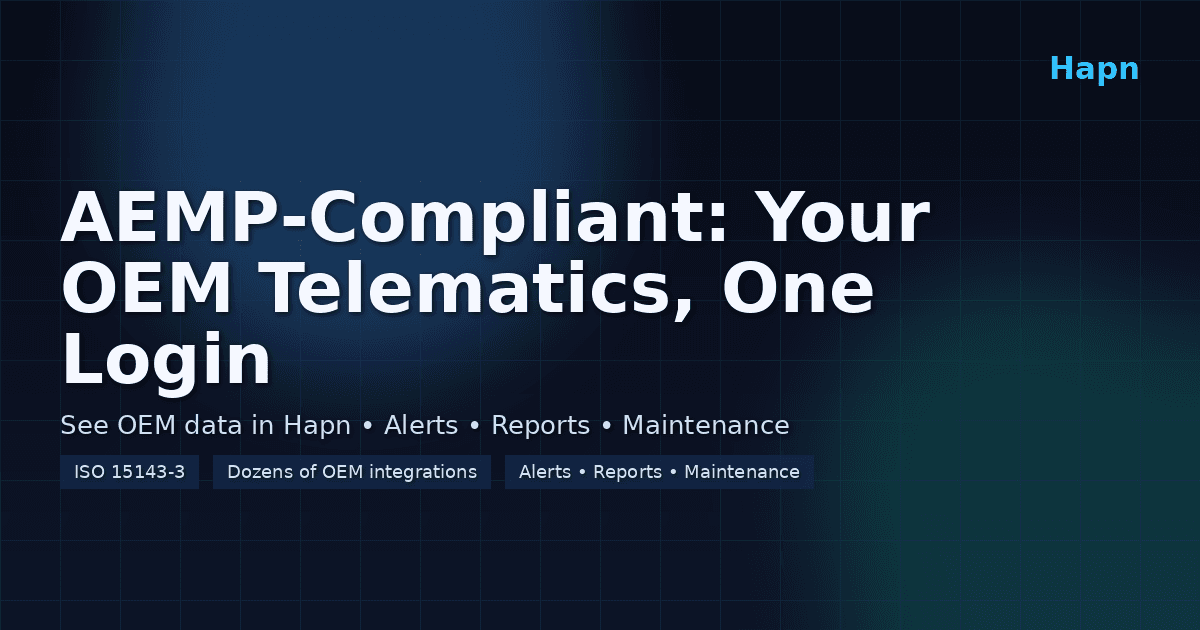Every year, American businesses lose millions of dollars from lost assets. In an effort to avoid these losses, businesses use asset tracking to keep track of their fixed and non-fixed assets.
All businesses — even those that do not sell or turnover traditional inventory — possess assets. As a small business owner, it’s tempting to believe that asset tracking is only relevant to large enterprises with plenty of heavy-duty assets in their portfolios. But this can’t be further from the truth. Small businesses need it just as much as large enterprises — if not more.
Asset tracking is particularly essential for small businesses that rely on their assets for the day-to-day running of the business. For example, if an asset is missing or unavailable due to unplanned maintenance, it can significantly impact operations. Asset tracking centralizes data so you can easily locate equipment and vehicles, and take a more proactive approach to maintenance.
There are a number of benefits of asset tracking, but in order to do it right, you’ll also need to invest in a GPS tracking device.
CONTENTS
- Passive vs. Active Tracking
- What is Passive GPS Tracking
- What is Active GPS Tracking
- Differences Between Passive and Active GPS Tracking
- Wrapping Up
Passive vs. Active Tracking
There are two main types of GPS tracking when it comes to delivering collected GPS data to users: passive tracking and active tracking. To know which type of GPS tracking is right for your business, you need to understand the differences between the two, including how they track and report data and their features.
Both passive and active GPS are valuable and have helped users in a variety of ways, but their ways of operating differ. And they both connect to and utilize GPS satellites.
The main distinction between passive and active GPS trackers is that passive GPS trackers don’t transmit any information. The passive GPS trackers need to be physically connected to a computer to retrieve its data. An Active GPS tracker on the other hand, transmits its data regularly via cellular or satellite connections.
Passive GPS Tracking
What is passive GPS tracking? A passive GPS tracker –for assets or vehicles, also known as a data logger, collects data continuously and stores the information through a USB stick, memory card, or internal memory. This information is not immediately available for viewing in real-time.
As the name suggests, data loggers log data that can be downloaded and viewed later. Once you download the data, you will be able to see key pieces of information such as speed and acceleration, active driving time, distance traveled, and more. Fleet businesses and those in the construction industry can benefit from applying passive tracking to vehicles. For example, the data gathered can be used to monitor employee driving behavior.
How Passive GPS Tracking Works
A vehicle passive GPS tracker is typically installed to monitor driver behavior, equipment performance, and routes. Like all forms of GPS tracking, data loggers use a satellite-based navigation system to track essential vehicle and driver information. A data logger is paired with GPS tracking software to provide important metrics that businesses can use to make informed decisions on asset availability and maintenance needs.
Passive GPS Tracking Features
If you are in the market for a passive GPS tracker, you may want to check out these key features to find one that suits your business needs. Some features to look for in a passive tracker are:
- Geofencing
- Alerts
- SIM card
- Rechargeable battery
- Battery life
Note: Since passive tracking does not return real-time data, you have to check the device regularly.
Why Choose Passive GPS Tracking
Passive tracking is ideal for scenarios that require a small battery-based tracker with a very long battery life. By not transmitting its location, the passive trackers can conserve battery life very effectively. Passive trackers are often used in scenarios where the tracker is disposable such as in supply chain logistics. One example of a passive logger use case is when vaccines are shipped. Passive loggers that log the temperature along the journey are placed in the vaccine containers. Upon receipt, the loggers can be checked to validate whether the vaccines stayed within the optimal temperature throughout the journey. In those scenarios the lower cost of the passive tracker which doesn’t contain cellular or satellite components is also often attractive.
Active GPS Tracking
What is active GPS tracking? Unlike data loggers, active trackers continuously emit a signal that can be tracked in real-time, wherever it may be. The data collected is transmitted to the user’s phone up to the minute with the help of cellular wireless connectivity, as opposed to being stored on the device and downloaded later for viewing.
Active tracking is what most people think of when they come across the term ‘GPS tracking’.
How Active GPS Tracking Works
All GPS tracking devices, including active trackers, rely on satellite communication to collect and relay location information. Active vehicle tracking uses a process called trilateration to calculate information about the location of a vehicle and send it to a central tracking portal or system in real-time as it happens. It allows businesses to know exactly where their assets are, monitor drivers, and streamline procedures.
Active GPS Tracking Features
Active GPS trackers come with a range of features to help you keep track of your fleet, vehicles and assets. The following features are critical components in any active tracker and will help you manage your fleet more effectively.
- Real-time view
- Trigger-based alerts
- Landmarks and geofences
- Analytics
- Maintenance alerts
- Driver dispatching
- Mobile tracking
Security and convenience are the key reasons why most people prefer real-time GPS trackers. A real-time GPS tracker eliminates the need to wait for data to be downloaded to a computer, as is the case with passive trackers.
Why Choose Active GPS Tracking
There are several benefits to choosing an active or real-time GPS tracker. Active GPS tracking is the best option for those who want to see their data and access information in real-time. You don’t have to wait to download data to a computer. You can act immediately if something’s not right. For instance, if a vehicle is stolen, an active tracker will alert you instantly and provide you with its exact location.
Differences Between Passive and Active GPS Tracking
To sum up, passive GPS tracking gathers and stores data such as location, trigger events like start-stop, vehicle speed, and sudden acceleration via internal or external storage devices such as a USB stick. You can manually download the data to a computer for viewing at a later date. Passive vehicle tracking systems are relatively inexpensive compared to active trackers.
On the other hand, active GPS trackers continuously emit a signal that can be tracked in real-time. They gather the same data as passive trackers, except that they are also transmitting it via satellite or cellular networks at the same time. Active tracking is more expensive since the hardware has more components inside.
See the pros and cons of both types of GPS tracking below.
| Active GPS | Passive GPS | |
|---|---|---|
| Pros | • Accurate data updates | |
| • Monitor from anywhere | ||
| • No chance of running out of memory | • No subscription fee | |
| • Lower cost trackers. | ||
| • Longer battery life | ||
| Cons | • A monthly subscription fee required | |
| • May require regular fleet management software updates | ||
| • Requires more oversight for most applications | • No real-time fleet tracking capability | |
| • Requires on-site data download | ||
| • Limited memory storage |
Read this blog to decide which type of GPS tracking is best for your business.
Wrapping Up
Whether it’s active or passive GPS tracking, they both come with a lot of benefits. When choosing a GPS device, it’s important to think about both current and future needs. Finding the right solution for your business will be a lot easier after you’ve decided if real-time active trackers or passive trackers suit your needs.
Contact us to learn more about how you can leverage passive or active GPS tracking for your business.
————


